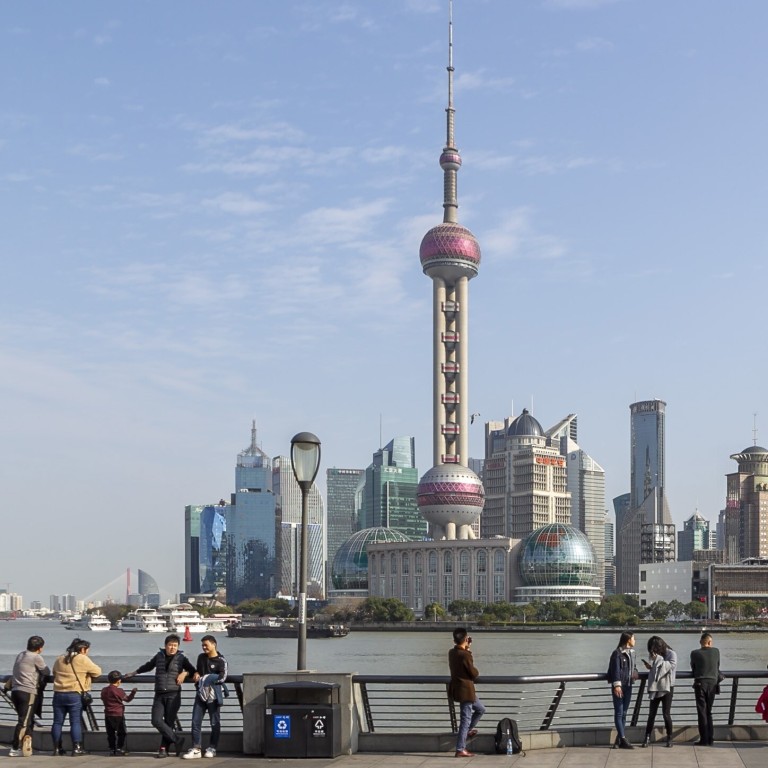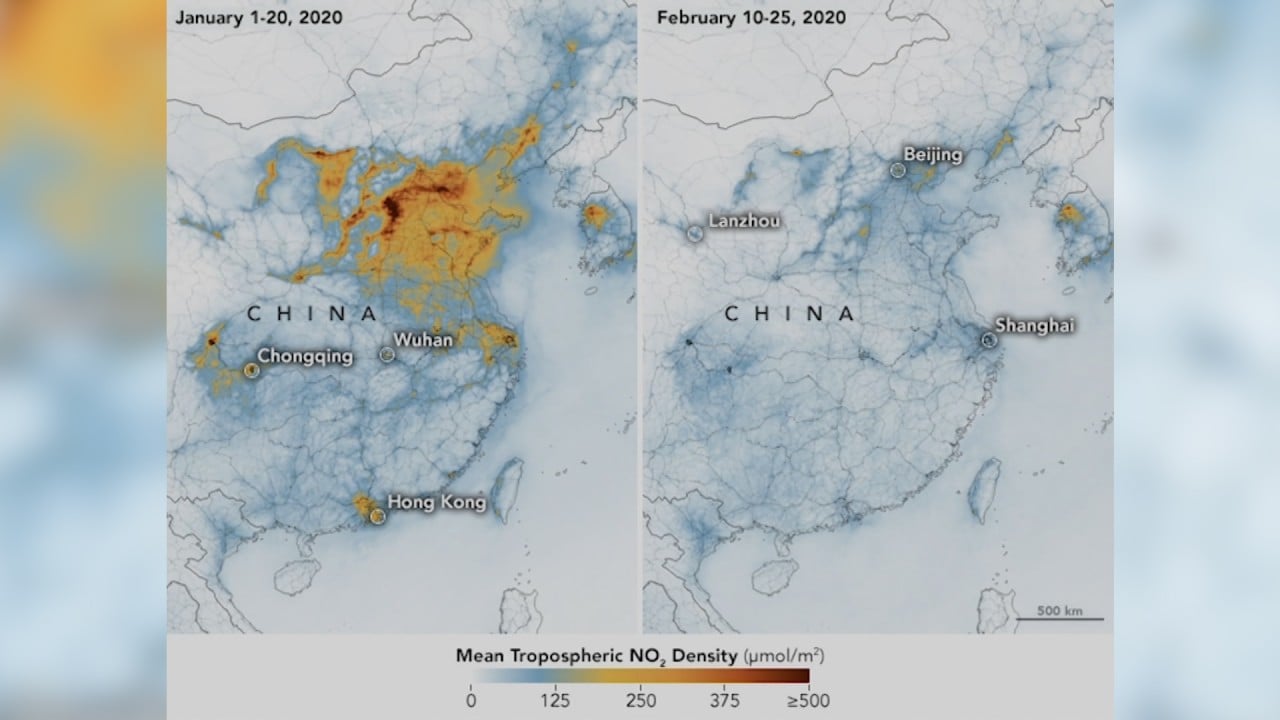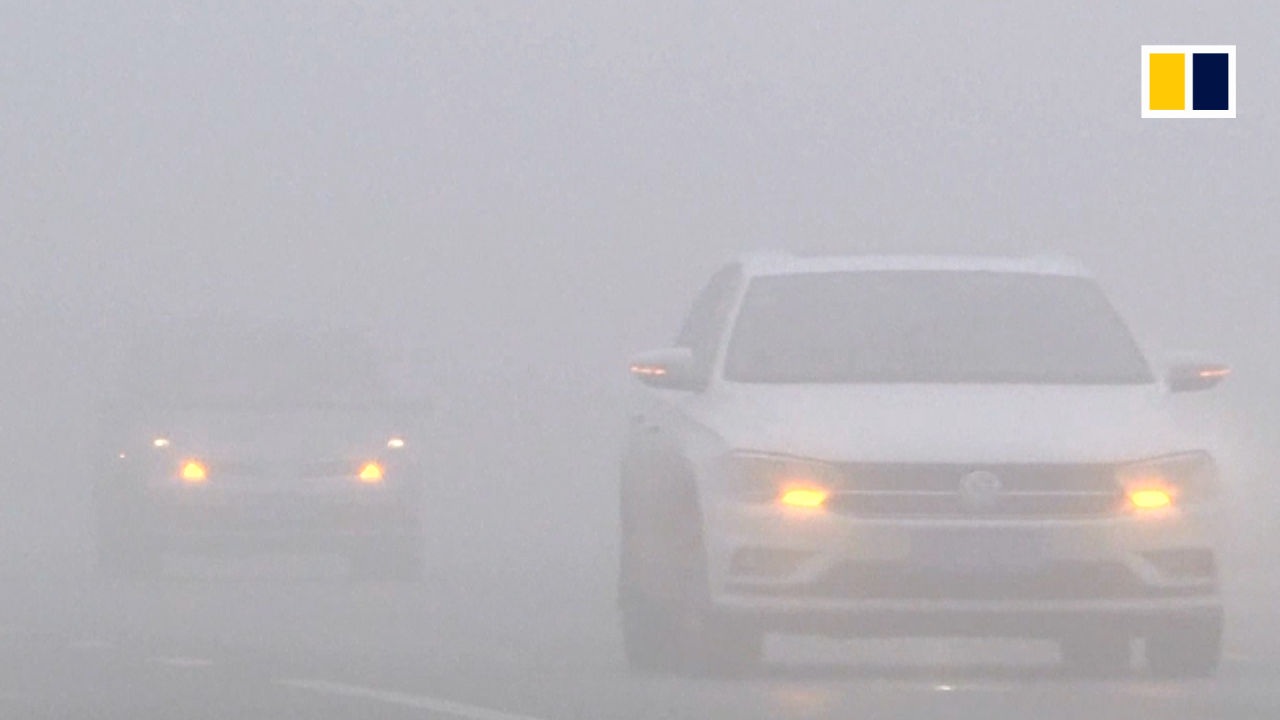
Coronavirus: China lockdowns lead to big dip in NO2 but air pollution stays steady, study finds
- Curtailment of transport brought down nitrogen dioxide levels In February, researchers say
- More analysis needed to understand complexities of regional atmospheric contamination, activist says
Michael Diamond, lead author of the study and a University of Washington doctoral student in atmospheric sciences, said the difference was more than “twice as large a drop as anything we saw in the record from 2005 to 2019, including from the 2008 great recession”.
“In the statistics of atmospheric science, that’s a giant signal. It is rare to see anything that striking,” Diamond said in an interview published on the university’s website.

03:31
Coronavirus: blue skies over Chinese cities as Covid-19 lockdown temporarily cuts air pollution
The study was published on August 19 in the peer-reviewed Geophysical Research Letters.
While the study showed a big change in nitrogen dioxide, there was no dramatic change in the total amount of aerosol particles in the atmosphere, or in cloud properties, which suggested the immediate climate-related impacts from the shutdown were negligible, Diamond said.
Emissions of other pollutants, including fine particulate matter – lung-damaging PM2.5 particles – hardly changed over China during the shutdown, the study showed.
The sharp decrease in nitrogen dioxide was largely because of the dramatic fall in transport emissions as well as a 10 to 20 per cent reduction in energy and industrial sources, it said.

01:25
China’s industrial heartland ‘sacrificed’ in war on pollution
Transport is a major source of nitrogen oxides, while the industry and power plants are sources mainly of PM2.5 and sulphur dioxide emissions.
Meanwhile, a combination of warm and humid meteorological conditions and complex chemical interactions further decreased nitrogen dioxide concentrations but likely enhanced secondary aerosol formation, which resulted in the increase of emission of some pollutants.
“The severe curtailment of passenger transport but comparatively muted changes in power generation and heavy industry, along with meteorology and complex chemical interactions, help explain this discrepancy,” the study said.

01:01
Northern China gripped with heavy air pollution
Ma Jun, director of the Beijing-based Institute of Public and Environmental Affairs, said the study showed that cities needed to do more analysis on pollution factors and could not only focus on one element.
“Take Beijing as an example, we can see that transport is an important factor, but the transmission of pollutants in the region might be more important than some people thought,” Ma said.
“It requires the whole region to adjust its industry structure, energy structure and transport structure to fight pollution.”

